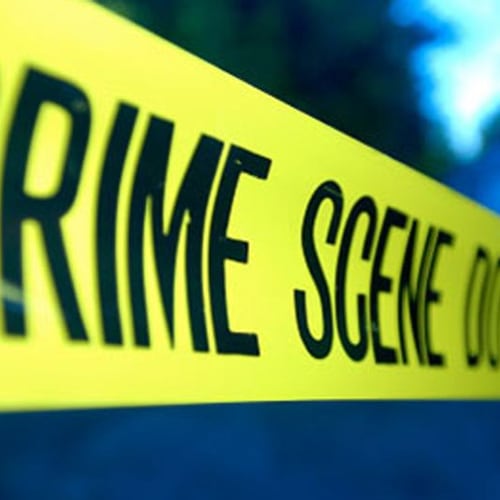ORLANDO, Fla. (AP) — Nine years after a gunman opened fire in an LGBTQ+-friendly nightclub in central Florida, killing 49 people, bullet holes can be seen in walls while glittering disco balls and lit-up bulbs on dressing room mirrors make the venue seem frozen in time.
The Associated Press and other media outlets on Monday were allowed for the first time inside the Pulse nightclub in Orlando where a gunman opened fire during a Latin night celebration on June 12, 2016, killing 49 people and wounding 53 others. The attacker, Omar Mateen, who had pledged allegiance to the Islamic State group, was killed after a three-hour standoff with police.
The viewing came days after survivors and family members of the slain were given the opportunity to walk through the nightclub before it is razed and replaced with a permanent memorial to what was once the worst U.S. mass shooting in modern times. The club had been cleaned, furniture was removed and lighting was installed ahead of the walk-throughs.
The Pulse shooting's death toll was surpassed the following year when 58 people were killed and more than 850 were injured among a crowd of 22,000 at a country music festival in Las Vegas.
Out of respect for survivors and family members, journalists on Monday weren't allowed to take photos or videos inside the nightclub.
About 300 patrons were packed into the 4,500 square foot (418-square-meter) club around “last call” when Mateen entered the venue and began shooting. Music was blaring from DJ tables and strobe lights lit up the dance floor, according to an incident review by the FBI.
The club had a main dance floor to the right of the entrance, a smaller “Adonis room” behind the entrance and a fenced-in outdoor patio. Bathrooms were along a wall next to the Adonis room.
Some patrons on the patio escaped after an employee kicked a hole in a fence. Dozens of others crammed into the bathrooms and a dressing room. Many on the dance floor were gunned down, as Mateen fired 200 rounds in less than five minutes. After officers entered the club, Mateen barricaded himself in one of the bathrooms. Eventually, officers used explosives and an armored vehicle to make a breach in the wall between the two bathrooms and another breach in the wall of one of the bathrooms.
On Monday, the covered hole in the wall between the bathrooms was still visible, as was the covered hole in the restroom. Some bullet holes had been plugged and others were covered with white tape. A cash register lay on a desk at the club's entrance and a money safe was hidden to the side of the desk, a testament to a time when cash was more common. A poster at the club's entrance advertised a “Dominican Pride Night” that was to have taken place two days after the massacre.
With the club's power turned back on, a small, circular stage in the Adonis room had rainbow lights rotating underneath it, and the bulbs were lit up in the dressing room where the club's performers used to get ready. Above a stage on the main dance floor, three disco balls glittered from light thrown off from a metallic chandelier.
On the main dance floor, part of the wood flooring was pulled up, revealing a concrete floor. On the long bar abutting the dance floor was a sign that said in big orange letters, “# HUGS NOT HATE.”
The nightclub is scheduled to be demolished later this year. The city of Orlando purchased the Pulse property in 2023 for $2 million and plans to build a $12 million permanent memorial that will open in 2027. Those efforts followed a multiyear, botched attempt by a private foundation run by the club's former owner.
___
Follow Mike Schneider on the social platform Bluesky: @mikeysid.bsky.social
Credit: AP
Credit: AP
Keep Reading
The Latest
Featured




